
When visiting the Los Angeles area, I especially enjoy immersing myself in film history. One of my favorite places that celebrates this legacy is the Hollywood Heritage Museum. In addition to offering permanent and rotating exhibits, this location also happens to host presentations and lectures that highlight the history of the film industry here. Moreover, the very structure itself is also historically significant.
Located across from the Hollywood Bowl, the collection is housed in the restored Lasky-DeMille Barn. The structure was built in 1901 as a stable and was later sold to a realtor in 1903. Hollywood became a city in the same year, later merging with the City of Los Angeles in 1910. As the film industry began to take root in Hollywood, the barn structure was later used as a dressing room and editing room for the Burns and Revier Company. The Lasky Company would later sublease the Burns and Revier Studio. In 1914, the company would successfully produce the first feature-length western, The Squaw Man (1914), made in Hollywood at the Barn and other locations.
By 1916, the Lasky Company merged with Adolph Zukor’s Famous Players to become The Famous Players-Lasky Corporation. In 1917, it merged with Paramount Distributing Company and would in time, become Paramount Pictures Corporation. The founders moved the barn to the new lot with them and it became the studio gymnasium in 1929, remaining a gym until 1979. Though it was moved to several different locations on the Paramount lot, its last location being adjacent to Cecil B. DeMille’s office, where it became an important part of Paramount’s Western Street backlot.
In 1979 Paramount went on to donate the building to the Hollywood Chamber of Commerce’s Hollywood Historic Trust. The structure was moved to a parking lot on the West side of Vine Street and remained there until the Chamber and Paramount redonated it to Hollywood Heritage in 1983.
Later, Hollywood Heritage had the barn moved to its current location since there was land designated in 1960 for a film museum that was not built. The following three years were spent in restoring the building with donated goods and services and with volunteer labor.
The Lasky-DeMille barn was registered as a California State Landmark in 1955 and was placed on the National Register in 2013, 100 years after the arrival of Lasky and DeMille. Today, the museum is owned and operated by Hollywood Heritage, Inc., a California State non-profit.
The museum’s collection holds a wide variety of treasures for fans of classic cinema. After passing the gift shop area, one can browse the broad range of items on display. In addition to informing visitors of the area, the museum showcases artifacts and information relating to the stars of early cinema.
Among the items, I especially enjoyed getting to see Mary Pickford’s makeup case in person.
Not far from the makeup case, I was also able to view a few items from another icon of silent cinema–Harold Lloyd. The museum had several of his Christmas ornaments on display.
In addition to celebrating the many on-screen talents, there were several artifacts that signified the technologies behind filmmaking. Buster Keaton‘s projectors are housed in the museum, in addition to one Technicolor camera.
There is also a multitude of movie props and artifacts for visitors to behold. Many of these items were used in front of the camera, though others appeared behind the scenes.
Costuming is also a crucial part of filmmaking and the Hollywood Heritage Museum also pays homage to this. The museum is home to several outfits designed by Adrian.
When I visited in April of 2019, the museum was also hosting an exhibit in honor of Stan Laurel and Oliver Hardy. It was especially intriguing for me to see many of Hardy’s personal items on display here.
Near the collection of Laurel and Hardy items were also several photos and personal effects from Gypsy Rose Lee.
In addition to the many wonderful costumes, props, and other artifacts displayed was a phenomenal miniature model of Hollywood and various film studios.
Out of the many items on display here, I think that one of the most important features of the Hollywood Heritage Museum is Cecil B. DeMille’s office. Here, visitors will find his desk, shoes, and a broad range of items that relate to his personal and professional life.
There are so many ways to honor the history of the filmmaking industry in California and the Hollywood Heritage Museum does a fine job of celebrating this legacy. The museum stands at 2100 N Highland Ave. in Los Angeles.







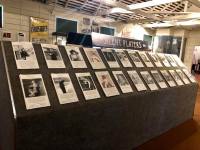


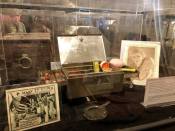


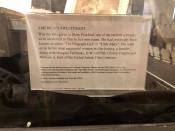




































































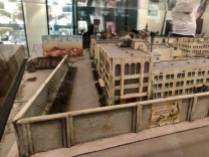
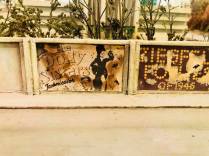




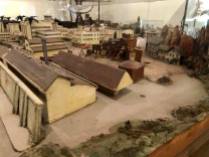




















Thank you for the nice article Annette, and getting the word out about the museum.
Thanks for reading!
Such Hollywood history deserves excellent write-ups and you have not failed us, Dr. B! The photos are awesome! The projectors brought to mind the collection of original carbon arc & lime light projectors at the Charles Young Research Library at UCLA. They are not on display now but I bet you could get a private showing with your credentials.
Terrific article and beautiful website!